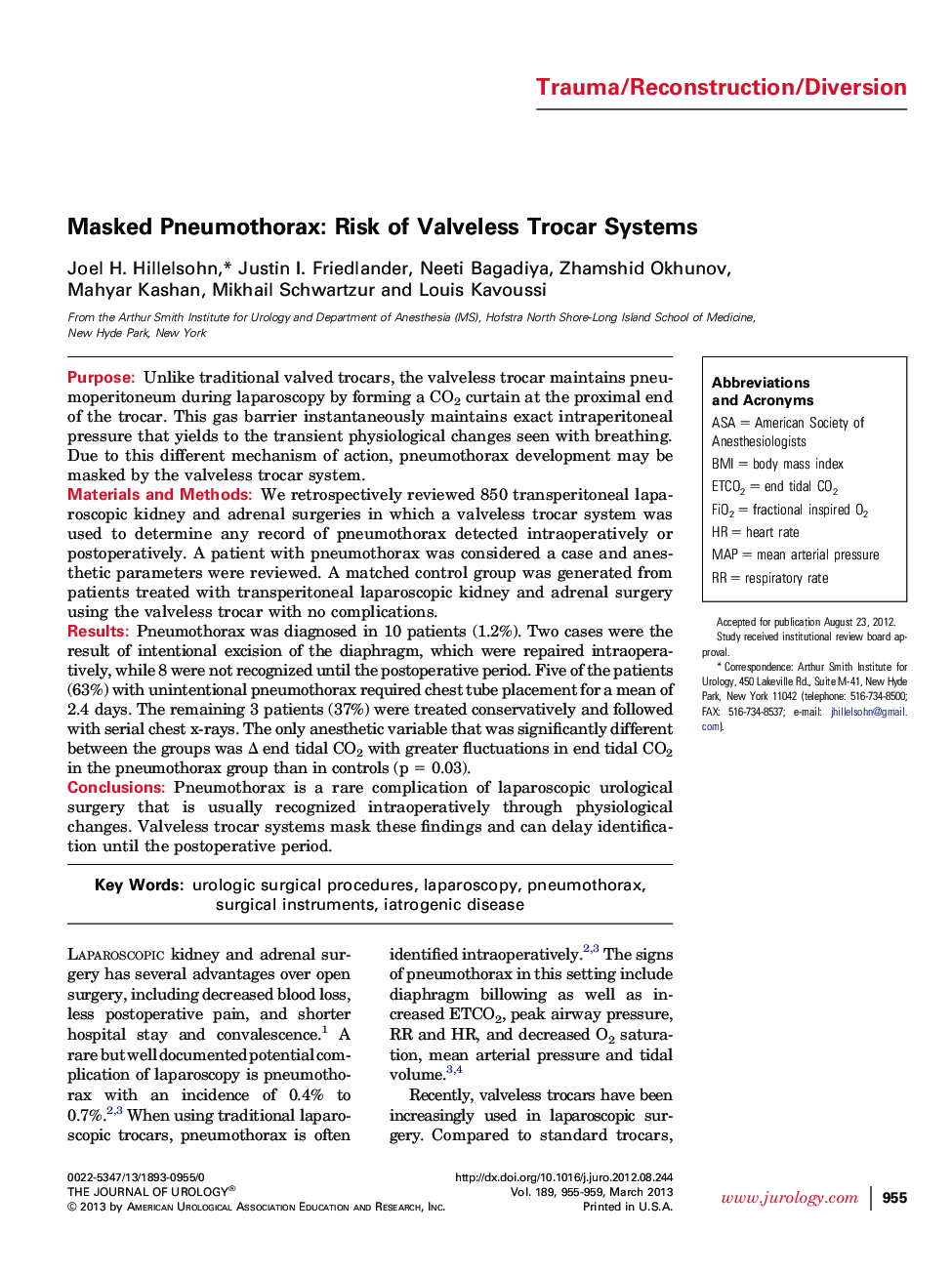| Article ID | Journal | Published Year | Pages | File Type |
|---|---|---|---|---|
| 3864936 | The Journal of Urology | 2013 | 5 Pages |
PurposeUnlike traditional valved trocars, the valveless trocar maintains pneumoperitoneum during laparoscopy by forming a CO2 curtain at the proximal end of the trocar. This gas barrier instantaneously maintains exact intraperitoneal pressure that yields to the transient physiological changes seen with breathing. Due to this different mechanism of action, pneumothorax development may be masked by the valveless trocar system.Materials and MethodsWe retrospectively reviewed 850 transperitoneal laparoscopic kidney and adrenal surgeries in which a valveless trocar system was used to determine any record of pneumothorax detected intraoperatively or postoperatively. A patient with pneumothorax was considered a case and anesthetic parameters were reviewed. A matched control group was generated from patients treated with transperitoneal laparoscopic kidney and adrenal surgery using the valveless trocar with no complications.ResultsPneumothorax was diagnosed in 10 patients (1.2%). Two cases were the result of intentional excision of the diaphragm, which were repaired intraoperatively, while 8 were not recognized until the postoperative period. Five of the patients (63%) with unintentional pneumothorax required chest tube placement for a mean of 2.4 days. The remaining 3 patients (37%) were treated conservatively and followed with serial chest x-rays. The only anesthetic variable that was significantly different between the groups was Δ end tidal CO2 with greater fluctuations in end tidal CO2 in the pneumothorax group than in controls (p = 0.03).ConclusionsPneumothorax is a rare complication of laparoscopic urological surgery that is usually recognized intraoperatively through physiological changes. Valveless trocar systems mask these findings and can delay identification until the postoperative period.
